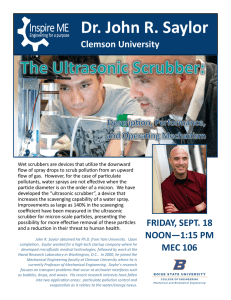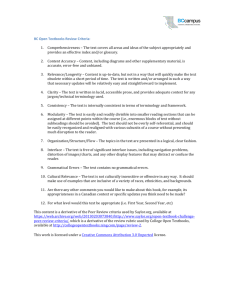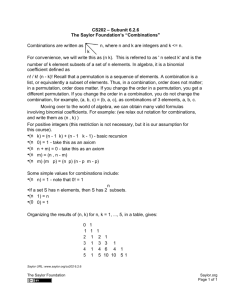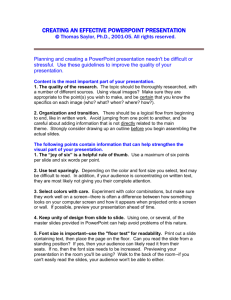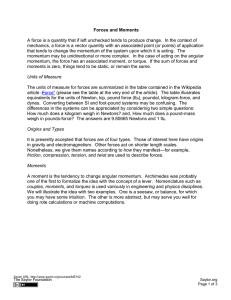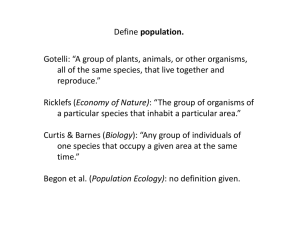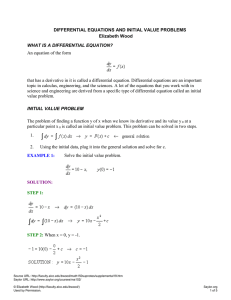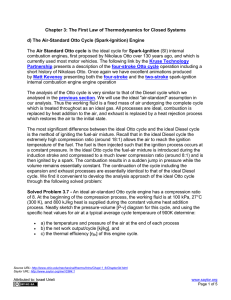Intro to Saylor - Digital Learning Department
advertisement
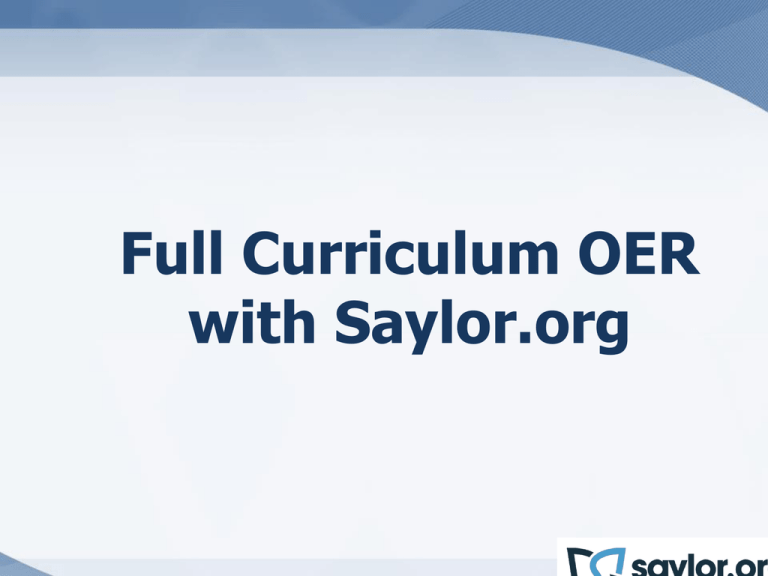
Full Curriculum OER with Saylor.org About the Saylor Foundation • The Saylor Foundation is a 501(c)(3) non-profit organization established by Michael J. Saylor, founder and CEO of business intelligence firm MicroStrategy. Mr. Saylor created the Foundation because he had a very simple, very earnest, and very bold idea: Education should be free. • Mission The mission of the foundation is to make education freely available to all. • Major products and highlights – Experienced educators build courses from online materials. – Saylor.org provides over 280 free online post-secondary courses to anyone with an internet connection. – Initiatives in K12 and Masters level courseware to launch 2013. Introduction to Saylor K-12 The Saylor Foundation is developing K-12 courses that are: • Free • Complete • High-quality • Peer-reviewed These courses are built around the Common Core State Standards and incorporate the most innovative ideas in education. Introduction to Saylor K-12 About the K-12 Courses: • Open Educational Resources • Student and Educator versions • Final Exams • Reviewed by 3 other educators • Saylor.org, iTunes U, and in other formats First Look at Saylor K-12 SneakPeak Courses: • K12ELA11 • K12MATHALGI Unit View Resource Box How do we build a course? • • • • • • • • Review Common Core State Standards Write learning objectives Develop course blueprint Find resources that fit the objectives and content Select standards to cover in that resource or activity Write directions for what students should do Edit and revise Peer Review Where do you get your content? • • • • • • Publishers? Other teachers? Khan Academy? Teachers Pay Teachers? Thinkfinity? Other sources? What do you want to learn more about? • • • • • How we locate resources? How we vet resources? How we frame resources? How we implement using OER? What is challenging for teachers? What resources have we created to support them? How do we locate resources? • Simple search = Google topic + Creative Commons • OER Resource Guides • Creative Commons Search • OER Commons • The Orange Grove • Connexions Major Sources for Content Math: • cK-12 • Khan Academy • Wallace Math • James Sousa • Open Textbook Catalog • • • • • • ELA: Project Gutenberg Librivox Sophia.org BetterLesson.com EDSITEment Great Writers Inspire How do we vet resources? • Use your judgment – does this fit the learning objectives? Is it accurate? Does this fit my needs? • Text complexity guidelines and rubrics • Common Core standards - What standard would this meet? Is this really fostering critical thinking and analysis? How do we frame resources? Clear directions for self-paced resources How does this fit in with our unit and our course? Why are we looking at this resource? What are the goals for this? What do I do when I get to this website? What should I look for while going through this resource? • What should I get from this? How can I tell if I met that goal? • Be specific! GeoGebra applets are great but they need directions • Ask questions • • • • • • Unit Introductions K12MATHPRECALC Unit 4 Our final unit concludes the course with the exploration of exponential and logarithmic functions. These two functions are studied together because they create inverses of each other. Exponential functions describe situations that get very large or very small quickly. The unknown in the function is in the exponent. Solution processes for solving these exponential equations are significantly different from how we handle equations involving linear, polynomial or rational functions. Of course equations like 3x = 9 or 2x = 16 can be solved easily using number sense, but equations like 7x = 10 need special techniques, and that’s where logarithms come in. Logarithms were invented in the early 17th century as a way to simplify some calculations. For example: if you need to multiply 7,000 * 80,000, you can multiply 7 * 8 = 56 and add seven zeros thereafter, yielding 560,000,000. Technically, you are doing the follow calculation: 7,000 * 80,000 = (7 * 103) (8 * 104) = (7 * 8) (103 * 104) = 56 * 107 = 560,000,000. Logarithms use properties of exponents to simplify calculations. One of the advantages of logarithms is that problems like 7x = 10 can be written in a different format and that simplifies the solution process. For a long time those logarithmic expressions were approached by books of tables, but we live in the world of technology where a simple scientific calculator can yield the information we want. Subunit Introductions K12MATHPRECALC • 4.1 Exponential Functions Exponential functions have their unknown in the exponent of the function. Suppose you invest $2 in a bank that doubles your money every month. The amount of money you have after x months could be described by the exponential function f(x) = 2x. Note that after a year you would have f(12) = 212 = $4096. That’s fast money! Some exponential functions get small very fast. This subunit will help you identify exponential functions, to find equations to describe them and to apply them to the concept of compound interest. Examples of Instructions K12ELA10 Instructions: • This video discusses four of the first abolitionists. Think about the motivation of each of these abolitionists. Were they motivated by the same thing? Were they motivated by different things? Write down the abolitionists names mentioned in this video and tell what motivated them. For example, were they motivated to fight for abolition because of their beliefs about education, Christianity, morals, personal experiences, and so forth? Examples of Instructions K12MATHGEOM Instructions: • This page provides a series of practice problems that allow you test your knowledge of arcs in circles. Each question has explanations worked out step-by-step if you need hints along the way. The program monitors your success, and when you have correctly completed about six questions consecutively, it will tell you that you are ready to move on to a new skill. Examples of Instructions K12MATHSTATS Instructions: • Please watch the video, which reviews everything you learned in the first two subunits. It takes you through a real-world example of using the normal distribution to solve a real-world problem. The lecturer also shows you how to use the calculator “backwards,” because you now are given a normal probability and you want to find the z-value or the x-value corresponding to it. How do we implement? • OER gives us lots of options – be selective, make sure each resource meets our needs. • Students need answer keys, review, and activities. • Pick the best content and tailor it to your students’ needs. What is challenging for teachers? • • • • • • • Distinguishing if content is open Time commitment to vet content Modern fiction Fair use v. open Interactive content YouTube Tricky providers – edu sources that are copyright, YouTube.edu, DANA center, etc. What resources have we created to support them? • How-to find open YouTube videos • Webinar how-to find open content • Resource guides for ELA and math with categories (videos, readings, practice problems, etc.) • Saylor 101 and Common Core 101 • Targeted resource assists What questions do you have?
